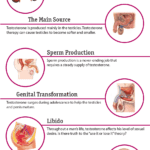
Meditation reduces anxiety
Practicing meditation regularly can help you to control your thoughts, regulate your emotions, and relax. This simple exercise can reduce anxiety symptoms and improve your quality of life. However, you should avoid doing it unnecessarily, as it can worsen your condition. Instead, work with a mental healthcare provider or trained meditation teacher to make the exercises work for you.
You can begin by counting your breaths. Do this for 10 minutes. If you feel anxiety, stop and begin again. Allow your mind to wander a bit, but return to the breath. Similarly, if you feel anxious, let your attention focus on your body and the physical points of contact. Afterward, open your eyes and pay attention to how you feel.
Studies have shown that meditation helps reduce anxiety by improving brain function. Research has also linked regular practice to changes in brain regions that regulate emotion and worry. The practice can even help individuals with social anxiety disorder. It can also improve one’s self-concept and develop compassion. If you can learn and practice meditation on a regular basis, you’ll be well on your way to reducing your anxiety.
Meditation can reduce anxiety by deactivating stress-related brain regions. Meditation can also help people with anxiety symptoms relax by allowing them to reconnect to the present. It gives people more space to connect their thoughts and emotions, which can help them recover from stressful events. This can also increase your physical health, which is beneficial when you’re trying to overcome a difficult situation.
Meditation can also help with social anxiety. It has been shown to increase the thickness of the hippocampus and shrink the default mode network, which controls mind wandering thoughts. It has also been shown to reduce physical symptoms of stress such as elevated heart rate, increased muscle tension, and poor sleep. Meditation can also help you cope with emotional situations and improve your relationships.
Meditation can also help people with anxiety to sleep better. It can help you focus on your breathing during stressful times and can improve your overall state of mind. The benefits are not immediate, but the results can be long-lasting. If you have time, you should try it out and see if it works for you. Even if you don’t feel like you’ve found the right meditation technique, you should try it out.
Another type of meditation that can reduce anxiety is mindfulness meditation. By practicing mindfulness, you’ll learn to be present in the moment and focus on being aware of your thoughts. By focusing on your thoughts, you’ll learn to control them and relax your body, thereby reducing your anxiety levels. In addition to calming your mind, it can reduce the size of the amygdala, the part of your brain responsible for fear.
This form of meditation can be done anywhere and anytime. It’s free and simple to practice. While there are several different meditation methods, they all share the same basic principles. First, find a quiet place where you can sit in a comfortable position. Next, listen to some white noise or soothing music to help you relax.
Meditation reduces pain perception
Meditation has a wide range of health benefits, including a reduced sensitivity to pain. According to new research, practicing meditation can reduce pain perception and reduce emotional responses to pain. It also helps break ineffective thought patterns and change the way we feel pain. The research findings could have implications for chronic pain sufferers.
This research used a controlled experimental setting to measure the effects of meditation on pain perception. Participants underwent an electrical stimulation of their calf and rated it according to its level of pain. In addition, the participants were asked to perform a mathematical task in between each painful stimulation. The results showed that participants in the mindfulness group reported a 33 percent reduction in pain intensity, and their pain perception was less unpleasant than those in the control group.
While meditation increases pain tolerance, it is not necessary to practice it constantly. A recent study at the University of North Carolina in Charlotte found that even college students who hadn’t meditated before were able to experience a reduction in pain after just one hour of meditation. After the meditation session, subjects were subjected to electric shocks that varied in intensity.
According to this study, meditation reduces pain perception by increasing activity in certain parts of the brain. This includes the orbitofrontal cortex, the anterior insula, and the thalamus. These brain regions have been implicated in the processing of afferent nociceptive information and are important for interoceptive evaluation. When these regions of the brain are stimulated, the perception of pain decreases, and this results in a reduction in pain and anxiety.
Research has also suggested that meditation can reduce pain in chronic pain. This technique involves engaging in a focused practice called mindfulness meditation. While this is not a permanent solution, it is an important first step towards helping patients manage chronic pain. It is a good way to learn how to cope with pain, while enhancing your quality of life.
Another study has shown that meditation can decrease pain perception by altering the brain activity of primary somatosensory cortex. The researchers found that participants who practiced meditation for 20 minutes per day experienced less pain after the session. The findings also showed that meditation-related pain reductions were associated with increased activity in the rACC, which is associated with cognitive control and pain modulation. In addition, the researchers found that participants who practiced meditation had greater activity in the right anterior insula, which links somatosensory processing areas with areas of the brain responsible for emotion regulation.
The research also shows that VR techniques like simulated mindfulness meditation can reduce pain. The researchers found that virtual training using mindfulness meditation reduced the perception of pain by more than half. This shows that mindfulness meditation reduces pain perception and improves quality of life.
Meditation reduces norepinephrine
Meditation has been shown to reduce the levels of the stress hormone, norepinephrine. In particular, meditation may reduce the amount of this chemical in the brain, which may help in combating anxiety. Many studies have found that regular meditators have decreased levels of this chemical. In addition, meditation may help reduce the production of the hormone ACTH, which stimulates the adrenal cortex to produce cortisol.
Norepinephrine is a major stress hormone in the human body, and meditation helps reduce its levels in the blood. Regular meditators have higher levels of GABA and lower levels of norepinephrine in their blood. Meditation also increases levels of melatonin, a hormone that regulates the body’s circadian rhythm and promotes sleep. This hormone only increases in the immediate aftermath of meditation. Furthermore, it has been shown that meditation increases the levels of dopamine in the brain, which is a good thing.
In addition to these psychological benefits, meditation is a practical way to combat stress. Practicing it for at least 10 minutes a day can reduce your norepinephrine levels and boost your ability to relax. It has been practiced for thousands of years and has now been mainstreamed as an effective therapy. Researchers have found that it can reduce blood pressure, lower anxiety, and even reduce symptoms of cancer and AIDS.
Besides meditation, eating a diet rich in vitamins and minerals, taking supplements, exercising, and changing your lifestyle are also important ways to reduce your norepinephrine levels. Taking care of your brain is essential to achieving better mental clarity, focus, memory, and critical thinking. MIND LAB PRO is one of the tools that can help improve your cognitive functions and quality of life.
The first step in meditating is finding a comfortable position and a relaxing posture. As you meditate, focus on breathing. Inhale through your nose and exhale through your mouth. Breathe in and out slowly, allowing your thoughts to flow freely throughout your body. Try to get into a comfortable breathing rhythm and keep it for the duration of your meditation.
The prefrontal cortex (PFC) increases activity during meditation. This activity stimulates the hypothalamus to release beta-endorphins. During meditation, the brain’s activity is heightened in the PFC, which is linked to the individual’s persistent will to focus attention. As a result, the PFC releases glutamate, a neurotransmitter that is associated with memory and learning.
Norepinephrine has several functions in the body, and abnormal levels of it can be harmful in various health conditions. It regulates the heart rate and digestion, and it also stimulates the lymphoid organs, which aid the immune system. It also regulates the body’s biorhythms, which affect our emotional and physical health.
Norepinephrine is a key stress hormone. It stimulates the sympathetic nervous system, which creates fight-or-flight responses and increases blood sugar and blood flow to muscles. Hence, meditation can reduce levels of this stress hormone. The positive effects of meditation are widely known and are beneficial for everyone, including people with anxiety disorders.








